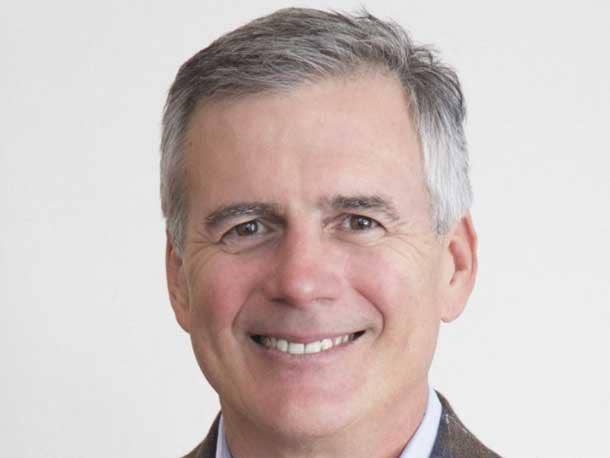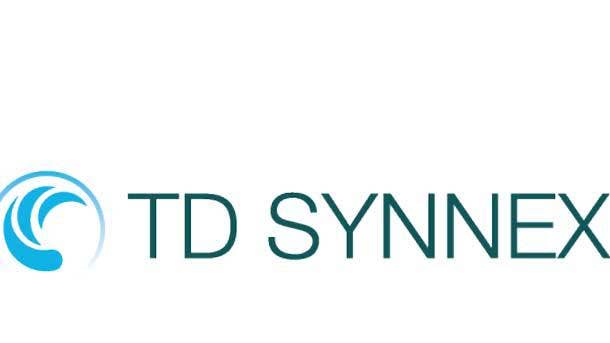TD Synnex CEO Rich Hume On Varnex And Tech Select Communities, Future Acquisitions And The Supply Chain
‘The [supply chain] backlog represents current needs and now there’s an emerging part of that backlog, which is future orders that are also part of that overall model. Our crystal ball would say that hopefully we’ll be beyond the peak by the middle of the year, and then really start to see progress being made and working it off in the back half of the year, says TD Synnex CEO Rich Hume.

Planning For The Future
For a company in the middle of integrating two large distributors into the world‘s largest IT distributor, TD Synnex is making significant progress. TD Synnex Tuesday reported its first financial report since the historic merger between Tech Data and Synnex in September. For its fourth fiscal quarter 2021, which ended Nov. 30, TD Synnex reported revenue of $15.6 billion, which was down 2 percent when adjusted for the impact of the merger, along with adjusted free cash flow from continuing operations of $520.2 million. For the year, TD Synnex reported combined non-GAAP revenue of $60.6 billion, up 8.3 percent over the total revenue legacy Tech Data and Synnex reported for the year before.
TD Synnex CEO Rich Hume, in an exclusive discussion with CRN, said the integration of the two legacy distributors into the new TD Synnex is proceeding ahead of schedule as employees are already clear about their roles, credit for channel partners is being expanded, and the transition to a single ERP system is moving quickly. Plans are in place for further acquisitions as well, he said.
Not everything is going smoothly however, as, Hume said supply chain issues are growing, but not just because of a backlog of unfilled orders.
“I think that backlog represents current demand, but the world is sort of recognizing now that lead times are elongated,” he said. “So I would also suggest that within that backlog, we see future order needs based on our customers anticipating lead times. In other words, if they believe that a product is four months out, they‘re going to post the order up now in order to have a chance of getting it in that four-month time frame.”
Hume also talked about uncertainty caused by COVID-19 and the government response, but said TD Synnex is not concerned about any geopolitical issues, including the rising tension between the U.S. and China.
Here is what Hume had to say about a range of issues.

How was TD Synnex's fourth fiscal quarter and fiscal year?
It was a good quarter overall. It‘s amazing. You know, you come together on Sept. 1, two different companies, and you have to do over $15 billion worth of business, but you make it happen.
The numbers that we saw today, those reflect the combined Tech Data and Synnex prior to the merger completion, is that correct?
There‘s a requirement that you put out numbers that would show the base Synnex and then the new combined entity on top. There are other numbers that are out there that demonstrate the combined entity and try to provide the pro forma year to year. For [fiscal year 2021], we did $60.6 billion. And the prior year for the combined entity, pro forma, would have been $56 billion. So the year would have had about an 8.3 percent growth. Like apples to apples, if you will. And then there are requirements of the SEC where we show the base of Synnex and then the new company. So there was a really large growth rate on those compares. But overall, I think that we did a couple things. No. 1 is we delivered a really solid quarter. No. 2 is we positioned the top-line financial expectations for the coming fiscal ’22, which for us runs from December through the end of November of ‘22.
With the combination of Tech Data and Synnex into TD Synnex, did you lose anything because of overlap in terms of maybe product sales or product lines? Was there any negative impact from overlap?
None that I‘m aware of, so therefore nothing significant. Frankly, the sentiment from vendors and customers has been really positive. In fact, a lot of the financial analysts will do their own channel checks, and they had come back and confirmed that they heard the same sentiment.

What's the latest on the integration of the two companies?
So there are a couple of things of note. First of all, we absolutely in that first 90 days had put in place our organization structure pretty much top to bottom. All of our co-workers know who their managers are, and they‘re clear on their roles and responsibilities. The second thing is that, from a customer perspective, we made sure that they were clear on the coverage that they have within the relationship, and also clear on critical items such as credit, etc. In particular, in the SMB space, we have measurably expanded credit, so A plus B and incrementally more on top in the aggregate. So I think that we’ve been meeting the core customer needs.
I would also highlight that we have determined that our ERP platform for the Americas will be CIS [Compac Information System], which is the four-decade legacy Synnex platform. [Editor's note: Synnex was founded in 1980 as Compac Microelectronics.] The differentiators there as it was reviewed and studied by many internal co-workers is that system is optimized in particular for IT distribution, whereas some of the other standard packaged offerings in the market are sort of general purpose, and you customize it. The last two important points of note around the platform are that the agility or the ability to change based on vendor or customer need is much more expeditious versus a packaged product. And it also offers quite a good cost advantage. So for the foreseeable future, we‘ll transition towards CIS in the Americas, and then we will maintain the existing ERP platforms for the rest of the world.
When we think about deployment, ERP is oftentimes a concern. This deployment actually has two points of note. First, it‘s going to be a rolling transition, meaning customers and vendors are on a timeline. So it’s not a light switch to flip, which will allow us, if there are minor problems that emerge, to address them before we move forward. And finally, both legacy companies have a lot of experience with acquiring entities and then realigning ERP. So we feel as if we‘re in a pretty good motion there. We’re on track with our synergies, the cost optimization that was anticipated. And the overall integration is on track relative to the timeline we had laid out for 18 to 24 months.
How about the integration of the TD Synnex channel communities, Varnex and Tech Select?
Sammy Kinlaw now leads our communities and we find that the mission and scope of those communities are unique and different. So the communities themselves at this point in time prefer to stay Varnex and Tech Select, and we‘re going to be endorsing and supporting both of those communities as we move through time, sharing best practices. And in the future, if there’s an obvious reason as to why we should move to a different alignment, we‘ll do it. But we make those decisions based on the voice of those communities, and really listen to how they feel they want to run, manage and operate, with a single senior executive responsible for both. So there’s a common listening post in Sammy.

TD Synnex is a result of the biggest merger in IT distribution. Does the company have plans to make further acquisitions going forward? Are there things that you could see acquiring to expand your reach into the solution provider community?
[On Tuesday] we announced our capital allocation strategy. In other words, that means what are we going to do with our cash. We said over the continuum that our plan would be to return 50 percent of that capital to shareholders in the form of dividends and share repurchases, and the other 50 percent would be reinvested into the business. You can do that organically, or you can do that through acquisitions. So the first big point is, absolutely we‘ll be investing in the business. We anticipate that our free cash flow in [fiscal year] 2023 will be around $1 billion. So this becomes meaningful money. And then second, we’re always interested in pursuing acquisitions that make us a better company, mostly from a strategic dimension. We have a pretty good footprint in the Americas and in Europe. We have a smaller footprint in Asia-Pacific. So that could be an area of expansion. And throughout the world, there might be particular countries or regions where we could benefit from having a bit more content that might align with our strategic direction. And should we find the right opportunity, we would clearly pursue it.
You just talked about acquisitions for geographic expansion. How about in terms of other services? What are some services that you would like to maybe bring in with acquisitions?
I think there are a couple of points here. First of all, technology always ebbs and flows, and there are always new needs. There are always really good services opportunities which emerge. But the mandate of us serving partners will not be compromised. That‘s our commitment. [Pursuing acquisitions] will be in the context of supporting a two-tier model.
Any particular services you think you'd like to bring in to expand TD Synnex's business?
We like to follow growth, so services that are aligned with the next-generation categories of cloud, security, analytics, and IoT are of interest because there‘s a good complement to where our business is growing. I would say those services, and primarily digital services, would be a focus area. We aren’t averse to labor-based services, but I think where the world is going is more in the context of digital services and the next-generation requirements.

What's the supply chain situation in IT distribution?
The backlog continues to grow. So we have not hit the peak. There‘s been pretty meaningful growth in our backlog in the last 90 days. I think that backlog represents current demand, but the world is sort of recognizing now that lead times are elongated. So I would also suggest that within that backlog, we see future order needs based on our customers anticipating lead times. In other words, if they believe that a product is four months out, they’re going to post the order up now in order to have a chance of getting it in that four-month time frame. So I think that the backlog represents current needs, and now there‘s an emerging part of that backlog which is future orders that are also part of that overall model. Our crystal ball would say that hopefully we’ll be beyond the peak by the middle of the year, and then really start to see progress being made and working it off in the back half of the year.
I think that if we were talking three to six months ago, the industry would say that we would have [the supply chain situation] meaningfully worked off by midyear. But I think that the industry is sort of signaling now that it looks like it‘s a bit of a more protracted recovery.
How do geopolitical events play into distribution now, particularly the tension between the United States and China over COVID, over politics, over supply chains. Where that's going? How is the tension between the U.S. and China impacting distribution?
What we‘ve always stated about the link in the IT supply chain is, we sit between our vendors and our customers. I believe that as the geopolitical outcomes impact vendors, so will they impact the IT supply chain. So I would say there’s nothing unique about IT distribution in that equation, but rather, if there are political ramifications to the segment, then they likely would apply to us now. There are parts of the world we do not have a business in. You mentioned in particular China. We really don‘t have a sales footprint. So therefore, we don’t have to determine what our business ownership might look like in China because we are not present there in particular. But I think the bigger overall macro thought is, being part of that IT supply chain, whatever macro effects geopolitical might have on the total category, we would be part of that, we‘d participate in that impact.
Does TD Synnex have any type of COVID mandate for its employees?
We align with the law, whatever the U.S. government law would state. So for example, right now the courts are deciding whether the government direction is constitutional or not. And so as that ebbs and flows, we absolutely align with rule of law. We‘ve been ebbing and flowing with those requirements.